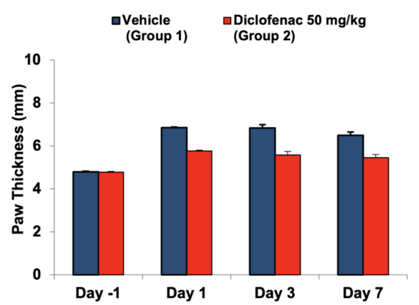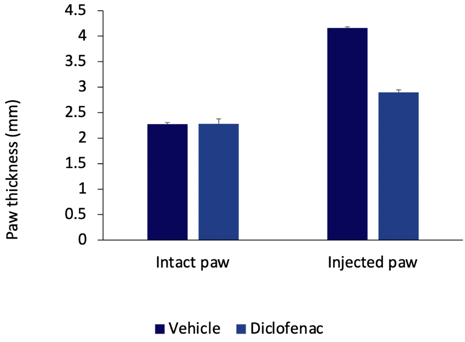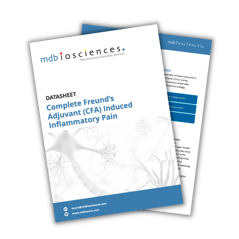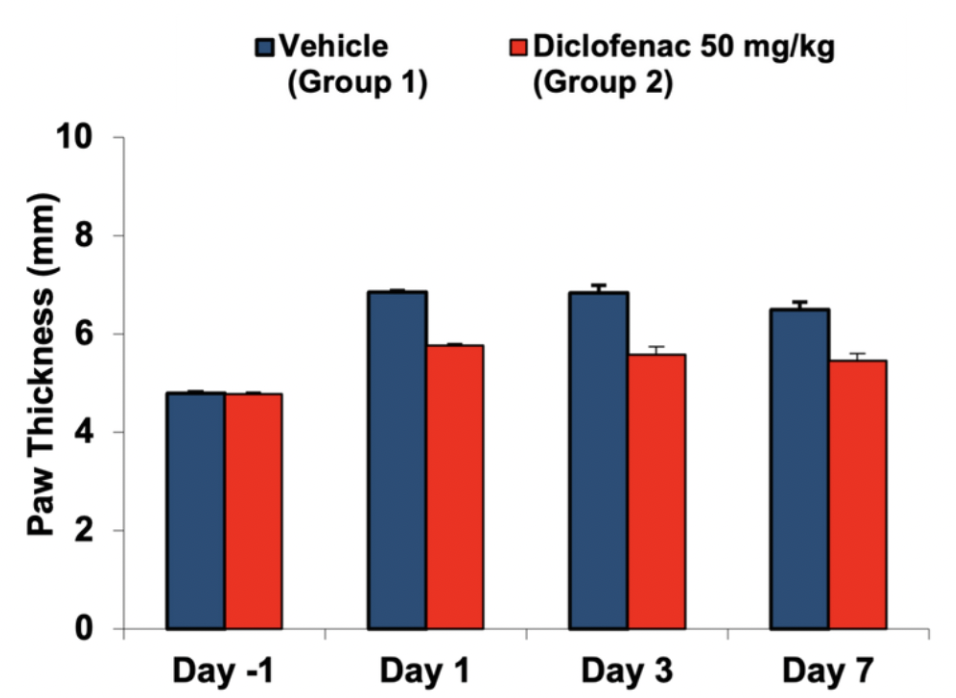Acute inflammatory pain is commonly associated with tissue injury and is characterized by neuronal plasticity involving both central and peripheral sensitization. Tissue damage prompts the release of inflammatory mediators from injured cells, which in turn initiates a cascade of inflammatory responses.
Upon injection, CFA triggers an inflammatory cascade, leading to the release of cytokines, chemokines, and other inflammatory mediators. This localized inflammation sensitizes peripheral nerves, resulting in heightened sensitivity to mechanical and thermal stimuli.
Inflammatory Pain Models
CFA Model & Endpoints
The CFA-induced inflammatory pain model is available in rats and mice and exhibits peripheral tissue injury following injection of CFA. Pain behavior tests include dynamic weight bearing, Hargreaves and von Frey to assess the weight distribution of each paw, heat sensitivity and mechanical allodynia. These behavioral changes are used to assess the intensity and duration of pain, and can be combined with histology and cytokine analysis to assess pro-inflammatory and anti-inflammatory markers in skin, CSF and plasma.

Figure 1. Paw thickness in CFA rat model. Inflammation caused by CFA is evaluated by measuring paw thickness. Rats treated with Diclofenac have decreased paw thickness and decreased inflammation compared to the vehicle group.
Carrageenan Model & Endpoints
Carrageenan induces a short-lasting acute inflammation and hyperalgesia. Carrageenan is injected into the planar surface of the left hind paw, inducing a paw inflammation and inflammatory pain response. This model is fast and reliable, however, for longer studies, CFA is preferred due to its sustained inflammatory effects.

Figure 2. Paw thickness from mice at 3.5 hours after carrageenan induction. Mice treated with Diclofenac have decreased paw thickness and decreased inflammation compared to the vehicle group.
Learn more about inflammatory pain models here or download the data sheet here.






